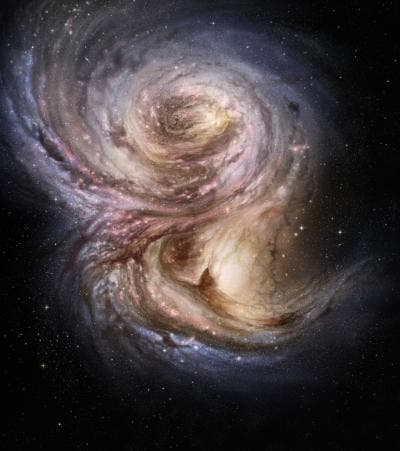
Born fat?
But if we’re dealing with this kind of black holes, one can only wonder – were they born fat, or did it just happen gradually? They could have been born obese, from massive clouds of atomic hydrogen, up to a hundred million times as massive as the Sun, which collapsed into themselves.
Now Bhaskar Agarwal at the Max Planck Institute for Extraterrestrial Physics in Garching, Germany, and colleagues say we should be able to see if this was indeed the case – galaxies with few stars, each dominated by a giant black hole lit up by the same mechanism that illuminates quasars.
Wait, what’s a quasar?
That’s a big question. Most if not all galaxies have supermassive black holes at their centers. A quasar is the extremely luminous and very energetic area that surrounds this central supermassive black hole.
Could the same mechanism which powers up quasars light the early black holes? Through a combination of computer simulations and mathematical analysis, Agarwal and his collaborators suggest that there may have been many such obese black hole galaxies just a few hundred million years after the big bang.






